Commerz in the 'hood... (aka "Commerce as the engine of urbanism")
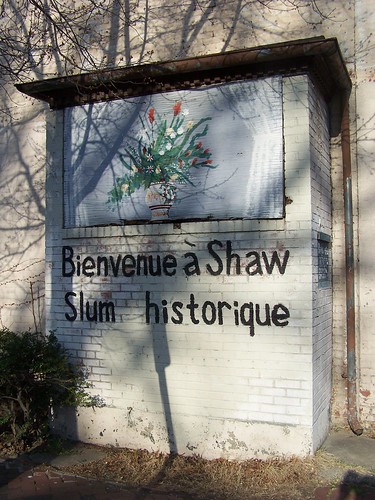 819 Q Street NW.
819 Q Street NW.In the past few months, the Washington Post has published a number of articles about changing times and perceived displacement in neighborhoods that are changing. There has been liberal use of the "G word," gentrification.
While people think of these changing neighborhoods as "historically African-American," the fact is that DC wasn't a majority African-American city until the early 1960s. Yesterday, the Post published the latest article in this seeming series, about H Street NE--focusing on a "controversy" in the commercial district. The issue has been discussed for quite some time on neighborhood e-lists, which are also now discussing the article, which is also discussed in commentary on the Frozen Tropics blog.
-- A Bittersweet Renaissance (Shaw)
-- Letters to the editor in response, A Disturbing Snapshot Of Shaw
-- One Urban Panorama Fades, Another Rises (14th and T Streets NW, part one)
-- A Boom Giveth, and It Taketh Away (14th and T Streets NW, part two)
-- Whose H Street Is It, Anyway?
I am not saying this because I favor the alleged "plan" for whitey to put some white chocolate back into the "chocolate city." Merely I am trying to make the point that successful cities are dynamic ever-changing places. In any case, that dynamism, that change, doesn't justify displacement.
For me, I make a distinction between neighborhood investment and gentrification. I define the latter as a failure to respond to the reality of the market--"creative destruction" and dislocation-- and develop a package of policies and programs that work to retain long-time residents who want to stay, people who may not be able to compete on equal terms otherwise in the brutally competitive real estate market.
Still, "displacement" is complicated by the fact (at least this is a hypothesis that I have asserted but not tested, so I can't call it a "theory") that for the most part urban dwelling African-Americans still prefer to move out of the center city to seek "the American Dream"--suburban living, with a big house, at least two cars, and a lot of grass that needs to be mowed. The fact that Prince George's County is majority black and highly affluent, and that African-Americans continue to move even farther out from the core of Washington to "rural" Maryland (Anne Arundel, Charles Counties, etc.) illustrates this thesis.
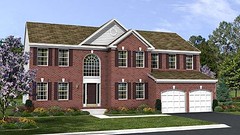 The American Dream in Upper Marlboro, Maryland. You will redefine your standards of living when you see how spacious the Virginia II floor plan is. In the Virginia II the grand owner's suite comes with elegant floor to ceiling columns that introduce you to the standard sitting room.There is an abundance of available features to delight your living experience in this home. From the K. Hovnanian website.
The American Dream in Upper Marlboro, Maryland. You will redefine your standards of living when you see how spacious the Virginia II floor plan is. In the Virginia II the grand owner's suite comes with elegant floor to ceiling columns that introduce you to the standard sitting room.There is an abundance of available features to delight your living experience in this home. From the K. Hovnanian website. __________
Anecdotal confirmation of this thesis comes from Karen Alston, one-time chair of the North Capitol Main Street program, who wrote in an entry titled "Race in the Race, Plus Politics," published in the current issue of themail:
I have African American friends that live in Bowie, Mitchellville, Ft. Washington, and Davidsonville that still will not come to my neighborhood of Eckington, because it isn't safe or stable in their eyes. I have to travel to their homes for events, parties, and social functions. Yes, we are divided by class and race lines in this city and across the country.
__________
The hullaballoo on H Street is over ANC6A's efforts to get the city's building regulation authority, the Department of Consumer and Regulatory Affairs, to enforce extant regulations about the types of foodservice establishments allowed as a "matter of right" or as a "special exception," in neighborhood-abutting commercial districts. Part of the difficulty is that the regulations are vague and in any case, 20 years old, so they can stand some tweaking and clarification in order to be better understood both by businesses as well as residents.
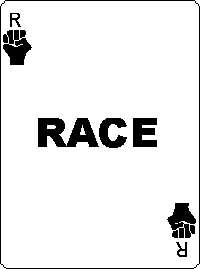
In a typical Washington game of "playing the race card" this has been portrayed as a way of whitey working to destroy independent black entrepreneurs.
This is a line that the H Street Community Development Corporation has laid out in its most recent edition of its newsletter, which features two full pages on businesses and the issue of what kinds of establishments are opening on H Street, not mentioning that one of the businesses it leased to, Blimpies, has been caught up in the closer interpretation of the regulations.
However, the HSCDC had no excuse, because at a meeting of the ANC6A Zoning Committee in May 2002, neighborhood resident Drury Tallant (experienced with zoning matters) pointed out in a C2A zoning district, that fast food restaurants require a special exception to be able to open.
Since Cluck-U is prominently featured in the current HSCDC newsletter, it's not out of the question to think that they've co-developed a "party line," that draws strongly on the race card, while avoiding issues of the business mix, lack of variability of offerings amongst food service establishments on the corridor, and how this negatively impacts the ability of the H Street commercial district to improve.
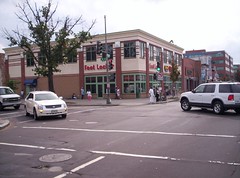 721-727 H Street NE, location of the now shuttered Blimpies.
721-727 H Street NE, location of the now shuttered Blimpies.What about U Street? Mocha Hut is a black owned restaurant with a far more congenial atmosphere and quality food cooked on the premises. There is Love Cafe, Busboys and Poets, and many other interesting and quality sit-down establishments including a number of Ethiopian restaurants, all owned by African-Americans or African entrepreneurs. You don't see H Street people complaining about those establishments--we are patronizing these businesses and we wish we had similar options in our neighborhood.
 Is it about race or the quality of the offer? Busboys and Poets on U Street NW, photo by Furcafe.
Is it about race or the quality of the offer? Busboys and Poets on U Street NW, photo by Furcafe.What about African-American entrepreneur Alphonso Morgan, proprietor of R&B Coffee on the 1300 block of H Street, an establishment that has been warmly received by members of the community? H Street Martini Lounge whose the African-American proprietor was quoted about African-Americans being forced out, was eagerly welcomed into the community. So was Phish Tea (at least before people started experiencing their the service-value disconnects). So was Philadelphia Water Ice, which because it serves hot dogs 7-11 style is categorized as quick service, but provides a product not otherwise available on the corridor.
All are African-American owned businesses. The issue is type, quality, variety, and impact of the offer. Nothing more, nothing less.
Ironically, some of these sentiments have been captured in previous Washington Post articles, in fact one about the Blimpies, long before the building ever opened, in "Criticized Nonprofit Could Get $1 Million: Council May Fight Plans for H St. NE" by Yolanda Woodlee; Jun 4, 2002; B.01.
Sheila White, quoted in the article saying that H Street doesn't need another place to buy a tuna fish sandwich, is African-American and representative of residents of all races who are merely looking for a wider variety of neighborhood dining options.
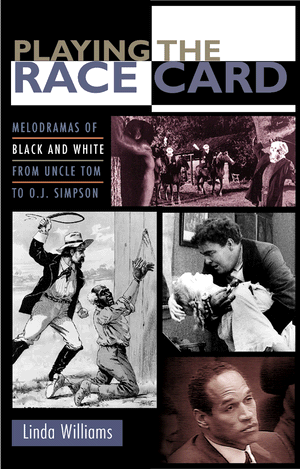
Last weekend, to add some data to this argument, I did a little survey* of food establishments on the corridor and found:
-- 17 quick service carryout establishments with no seats;
-- 6 quick service restaurants w/seats (Popeyes, Subway, Freddies, Cluck U, Birdland, R&B Coffee)
-- 2 casual dining restaurants (with limited appeal, in my opinion anyway)
-- 1 upscale restaurant (Phish Tea, which unfortunately fails to meet customer expectations)
-- 4 taverns, 3 with limited food service.
* Corrections provided by Elise Bernard are incorporated into this tally.
This isn't about race, but about what is being offered on the H Street corridor, and the desire to (re)create a successful commercial district. I have written about this so much that I don't feel like repeating all the arguments, however, I will say this (which is somewhat new)...
Last night I went to a presentation by Alex Wall, author of a recent book about Victor Gruen. To Wall, the story of VIctor Gruen is really about "commerce as an engine of urbanism," and it turns out there was a lot more to Gruen than I realized, even though as a child I was a patron of his very first shopping center in a Detroit suburb...
A big thing is the narrative, "the story" told by the commercial district. (Gruen's ideas have since been extended in the 1970s by James Rouse and in the 1980s by Jon Jerde--Citywalk in LA, and even Disney, although Disneyland was created at the same time as Gruen began developing shopping centers and his increased prominence on the national scene. Gruen was familiar with and interacted with Disney; Wall claims that Disneyland was Walt Disney's organized response to Southern California sprawl.)
Wall's book seems worth reading and will likely have as much impact on my thinking as some of the chapters in the Harvard Guide to Shopping. In particular that book's chapter on women which states "a history of shopping is really a history of women"... reinforced my thinking about the importance of the fact that upwards of 80% of retail transactions are conducted by women and if women don't feel comfortable in a (the) (H Street) commercial district they won't shop there and it won't succeed (unless somehow it can become a "men-only" shopping district anchored by stores like Bass Pro or Cabela's--the "beyond" big box sized sporting goods behemoths primarily shopped in by men).
This relates to the Reilly Law of Retail Gravitation which focuses on measurable indicators--the number and mix of stores in particular shopping destinations. The Law is that with factors being roughly equal (travel, etc.) people will choose the shopping center/option that is better (more and more interesting stores, variety of product selection, etc.). Obvious huh? In the urban context especially, factors that people mull over when deciding between shopping destinations include comfort and perceptions of safety, physical condition of the commercial district, etc.
This is why I joke about Main Street principles #9 and #10 (there are officially only 8 principles)--knowing what you have (or not) and being honest about it; and making the hard choices you need to make in order to improve.
As long as a particular urban commercial district is deficient compared to nearby shopping alternatives, it won't be able to attract new customers, until it starts providing some decent options. That's why I always write about the importance of restaurants, places like Banana Cafe on 8th Street SE, which seeded revitalization by attracting patrons to the corridor despite its negatives, and the existence of few other retail options, because of relatively inexpensive but decent enough food in a comfortable enough atmosphere.
A new carryout, or even a sit-down fast food place like Cluck-U will not change the offer in the commercial district in a substantive way, and the commercial district will continue to languish.
As I have said many times before, businesses want to make the most money, for the least investment, with the fewest problems. (There are other factors, granted, but I won't bore you with the details.)
It's not worth putting my risk capital in a place with so many negatives, and in a milieu that can be described simply in one word: cacophonous, where most of the leaders, not people like Joe Fengler, Cody Rice, and Rich Luna, but many of the others, act at cross-purposes.
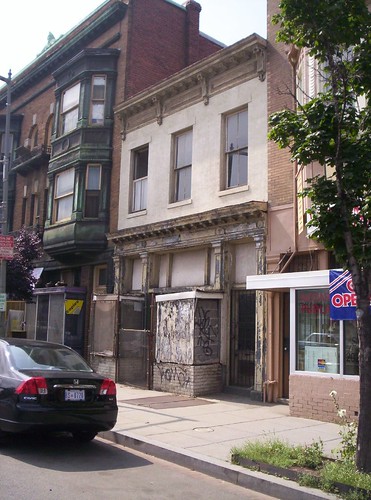 What does the narrative of this section of the 400 block of H Street NE say to you?
What does the narrative of this section of the 400 block of H Street NE say to you?Labels: commercial district revitalization, contested spaces, gentrification, invasion-succession theory, urban revitalization, urban sociology



0 Comments:
Post a Comment
<< Home